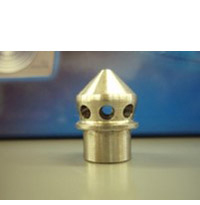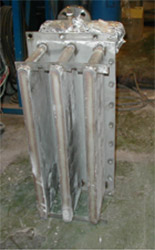Fluidized Bed Dryer
Structure and Principle
The dryer is direct heating type which brings heated air into direct contact with the raw materials. Heated air is blown up from the dispersion plate evenly, and the raw material gets into motion on the dispersion plate and is suspended in heated air, forming uniformly mixed layer like a fluid, which is known to as fluidized bed. Raw material fed from the feed side of the dryer enters the fluidized bed and the dried material is discharged from the other side. An amount of heated air can be reduced by installing of the heating elements heated by steam or other heating media.
Features
Uniformity of product quality
The fluidized-bed dryer employs a specially structured dispersion plate to create a uniform fluidized state, which prevent products from uneven drying.
Easy adjustment of retention time
The desired retention time can be set by adjusting the height of the fluidized bed by controlling discharge rate of dried material.
Easy maintenance
No internal moving parts make maintenance easy.
High thermal efficiency
By installing a heating element inside dryer, higher thermal efficiency can be obtained and the dryer size and amount of exhaust gas becomes smaller.


Machine-hat nozzle

Heat element
Applications
ABS-resin, Polycarbonate, Terephthalic acid, Polyplopylene, Polyethylene, Acrylic resin, Feed stuff, Soybean cake, Salt, L-Lysine, Adipic acid, Ammonium sulfate, Copper sulfate, Salt cake, Calcium chloride, Potassium carbonate, Sodium carbonate, Urea, Coal
Related field & technology
- Chemicals field
- Chemical manufacturing Plant
Fluidized-bed dryer is used with a variety of chemical manufacturing equipment.
- Chemicals fieldIron and steel field
- Sulfate crystal manufacturing plant
Fluidized-bed dryer is used for Sulfate crystal manufacturing plant.
